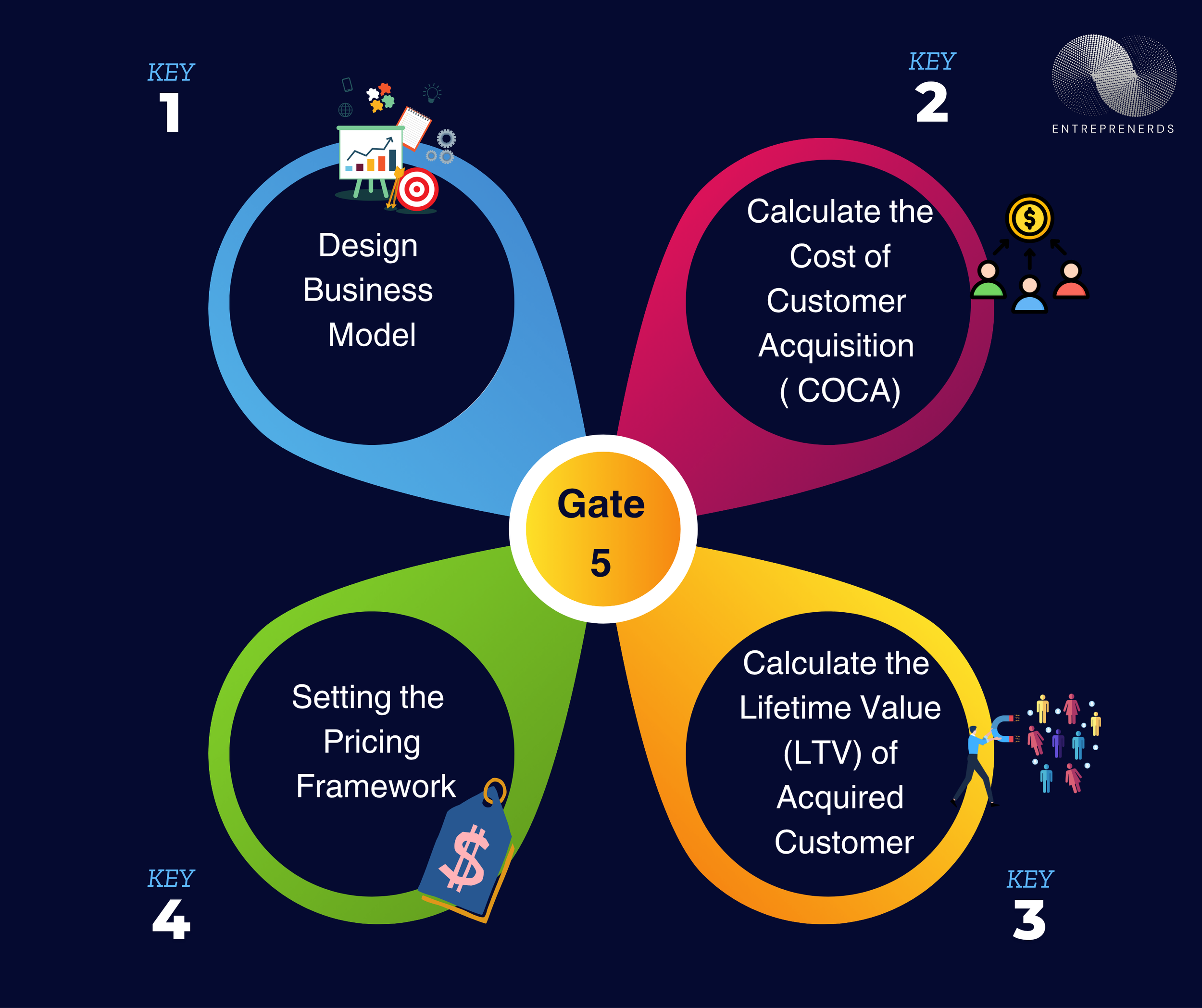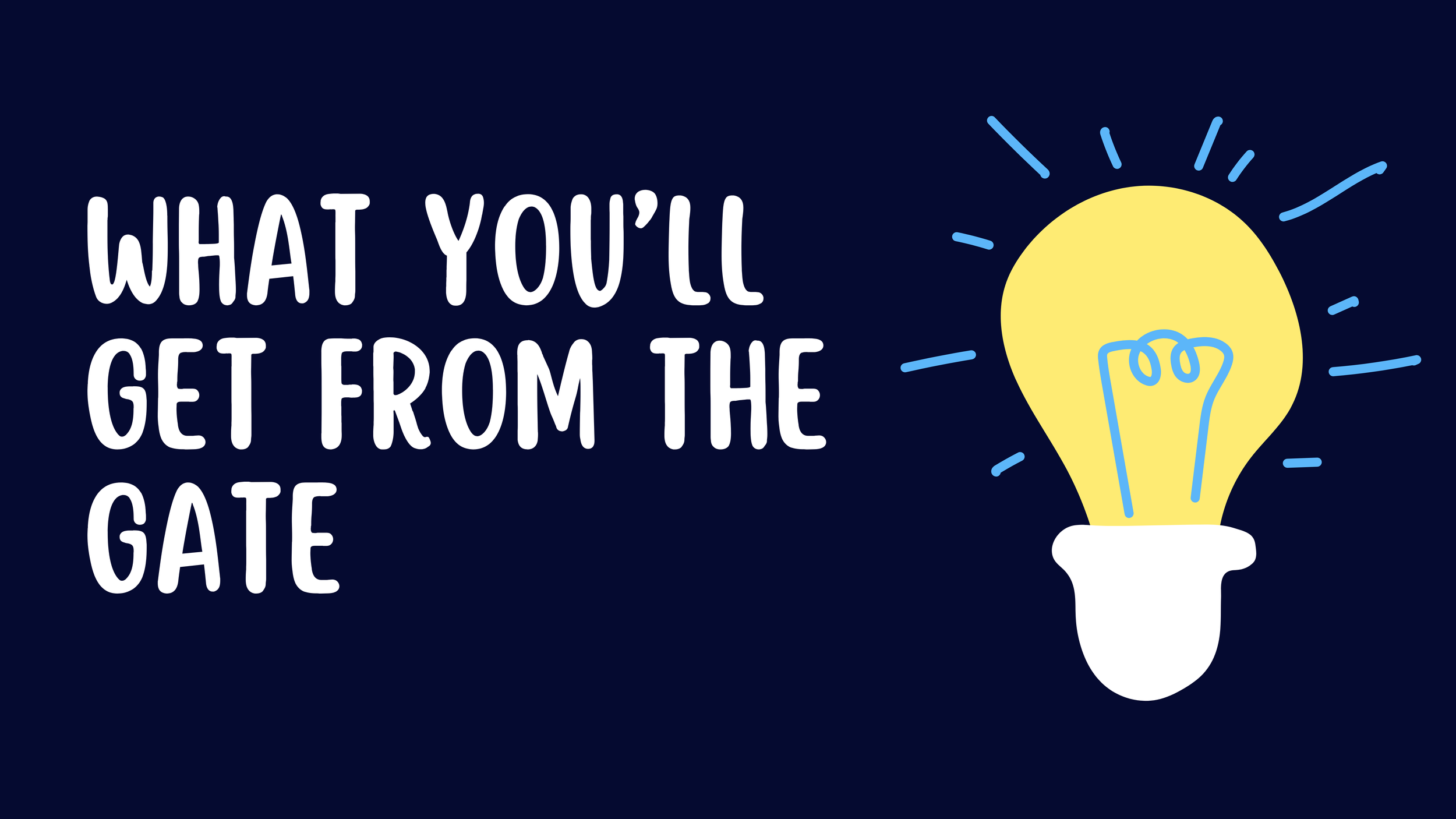Gate 6: How To Design and Build Your Product
Gate 6- Overview
LET’S FIND OUT MORE
Gate 6 marks the transition from planning to building. After understanding your customer and testing your assumptions, it’s time to turn insights into action. In this stage, you will design and create a minimum version of your product or service that solves a real problem, delivers value, and generates meaningful feedback. Whether you’re building an app, launching a local service, or creating a new physical product, this gate helps you learn by doing—without wasting time, money, or effort on the wrong things
Gate Structure
The Gate is divided into several Keys ( Themes), each focusing on a specific aspect of entrepreneurship. Each Key includes readings, discussions, practical assignments, and business-related deliverables.
Themes you will cover
To achieve this, you’ll explore the following four essential keys:
Key 1 : Identify Key Assumptions
Key 2 : Test your Key Assumptions
Key 3 : Design your Minimum Valuable Product ( MVP)
Key 4: Build Your MVP
How we support you
We will provide support throughout your learning experience. Your learning Success manager will be available to support you if you have any questions or need any help. You can also schedule one session with a mentor to discuss entrepreneurship questions related to this gate.
What is Required of You
The Gate is divided into several sections, each focusing on a specific aspect of entrepreneurship. Each module includes readings, discussions, practical assignments, and assessments.
Delivery Platform
The Gate is delivered through our online platform, Entreprenerds Space. Delegates can access the platform online or via their mobile app, allowing them to participate in the programme on the go, even offline.
What you will get from the Gate
How to Make Money from Your Product
By the end of Gate 6, you will be able to:
Identify and prioritise the key assumptions your business depends on.
Design a simple, testable MVP (Minimum Viable Product) that delivers real value
Choose the right MVP format (digital, physical, or service-based) based on your idea.
Build and deliver your MVP using lean methods, including manual and no-code tools.
Collect feedback and evaluate whether your MVP meets the Minimum Viable Business Product (MVBP) criteria.
Learn from real users and use their input to improve, iterate, or pivot your idea.
Delivery System
Concept Notes
Applications Exercises of each Theme
Videos Explaining Each Concept by Experts and Entrepreneurs
Webinars to discuss the themes with students
Thematic Interactive Discussion with the Learners
Peer Evaluation
Mentorship Session
Virtual Class
Assessments
Real-World Applications
These skills directly support:
Startup MVP development (for funding, pitch competitions, and product validation)
Lean UX and design thinking projects in schools or accelerators
Freelancer or service pilot programs (e.g., workshops, coaching, handmade goods)
Product or growth roles in early-stage companies
Demonstrating initiative and user testing in internship/portfolio applications
Badge 1: Assumption Breaker
-
Skills
1. Identifying key business assumptions
2. Prioritising assumptions by risk and impact
3. Designing testable experiments
4. Running MVP tests with real users
5. Capturing and interpreting feedback
6. Learning from failure
-
Use Case
1. Spotting what must be true for your startup to succeed (e.g. will people pay?)
2. Deciding which assumptions are worth testing first
3. Creating low-cost tests like landing pages, pre-orders, or trials
4. Gathering behavioural data (what users do, not say)
5. Using data to validate or invalidate your ideas
6. Pivoting or refining based on test outcomes
Badge 2: MVP Launcher
-
Skills
1. Designing a Minimum Viable Product (MVP)
2. Using no-code & manual tools
3. Mapping product delivery steps
4. Concierge and Wizard of Oz MVPs
5. Building an MVBP (Minimum Viable Business Product)
6. Speed-to-feedback mindset
-
Use Case
1. Creating the simplest version of your product that delivers value
2. Building MVPs without programming (e.g., Canva, Google Forms, WhatsApp)
3. Planning how your MVP will be built and experienced by users
4. Simulating product functionality manually to test real demand
5. Launching a paid version of your MVP and collecting feedback
6. Launching fast to learn early and avoid waste
Your New Venture After this Gate
By the End of Gate 6, You Will Have:
A functional version of your product or service that solves a real problem
✔ Evidence that users understand, want, and engage with what you’ve built
✔ Insights from real-world behavior—not just surveys or interviews
✔ Your first test of whether users are willing to pay or commit
✔ A feedback loop to guide your next steps—whether improving, pivoting, or scaling
Gate 6 complements everything you’ve done so far by giving you proof, not just plans. It’s your first step into the market—not to grow fast, but to learn fast


